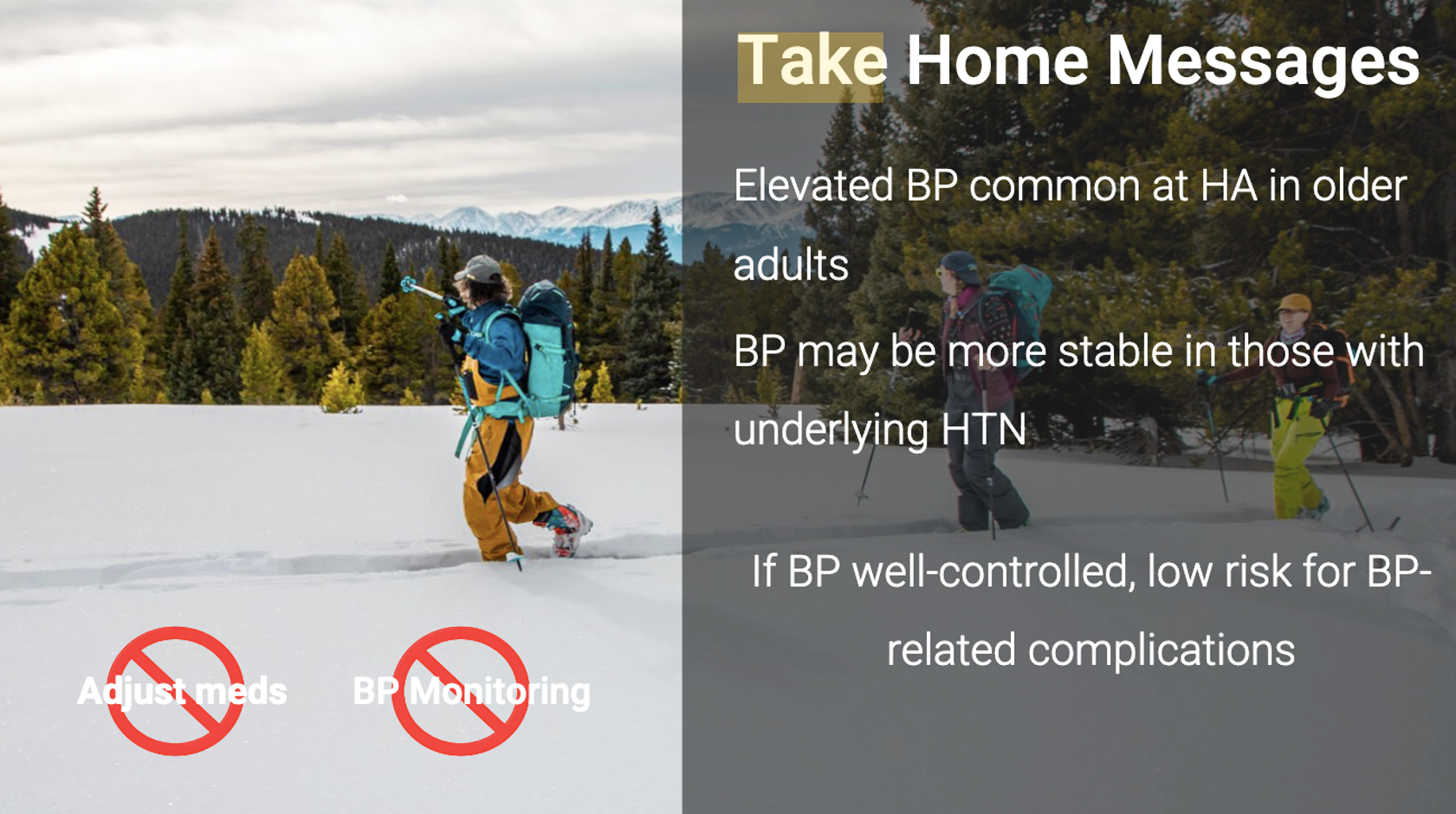Still climbing and skiing ambitious things…
WildMedEtrier Summaries
Keyes, L MD FACEP University of Colorado, presented on acute blood pressure changes at altitude at the WMS Winter conference, 2023. Also addressed in this article is information regarding prescriptive altitude travel restrictions for pre-existing medical conditions and cardiovascular concerns from CDC/Peter Hackett MD, co-founder Himalayan Rescue Association per personal communication. Additionally, included is a synopsis of research regarding cardiovascular and pulmonary changes in response to chronic altitude exposure- which is relevant to all of us individually if we reside near 8,000 ft. or higher.
Anne Lorimor, 89 y
Oldest person to climb Killimanjaro
Yuichichiro Miura, 80 y
Oldest man to climb Mt. Everest
Well, I guess this is a disappointment if you thought living at a ski area would lead to the Fountain of Youth – it’s all kind of a wash. You might live a little longer as noted above but will probably develop high altitude pulmonary hypertension and have to move to lower altitude anyway… (see the end of this article for the increased risk of pulmonary arterial hypertension and/or chronic mountain sickness after years of paying a mortgage or parking your Sprinter van with your only locale consideration being first tracks in the back bowls at your favored ski area…)
Hypertension at High Altitude
You can expect to see an increase in blood pressure at 24hr mark at altitude in people with normal blood pressure but not in those with pre-existing hypertension. (Carson et al, In Review, 2023).
What this means in a practical situation is your average paramedic or ER provider is going to be very concerned about systolic blood pressure that is generally considered severe (180/100 or higher). However, when measured at your average ski area in Colorado or other altitude above 8000 ft., the patient may be completely without symptoms and does not necessarily require a medication adjustment or treatment.
(Keyes L MD, Sallade T MD, Duke C MD: High Alt Biol. 18:267-277; 2017)
Other Physical Concerns of High-Altitude Activity
Altitude and other cardiovascular concerns for visitors:
CDC recommends caution in altitude travel with the following cardiovascular related conditions:
Poorly controlled dysrhythmia. (Atrial fibrillation, SVT etc.)
Poorly controlled hypertension.
Compensated heart failure.
Sickle cell trait (low oxygen can trigger the trait).
CDC recommends against altitude travel with the following cardiovascular related conditions:
Sickle cell anemia.
Myocardial infarction (heart attack) within last 90 days.
Cerebral aneurysms.
Unstable angina.
Pulmonary hypertension
(Centers for Disease Control and Prevention, High Altitude Travel and Prevention. Hackett, P MD, Shlim D MD. October 18, 2019.)
Cardiovascular concerns at altitude and you:
There may be a protective effect for ischemic heart disease in those who reside at altitude. However, this must be considered contextually within the knowledge that development of High-Altitude Pulmonary Hypertension (HAPH) and ultimately right sided involvement is often evident in extremely long residence above sleeping altitude 2500 m. (High Alt Med Biol. 2017 Mar 1; 18(1): 61–66.)
Additionally, Chronic Mtn. Sickness, which is a “clinical syndrome that develops after chronic altitude residence above 2500m. It is characterized by excessive erythrocytosis, severe hypoxemia, in some cases moderate to severe HAPH, which may evolve to cor pulmonale and Congestive Heart Failure.”
https://www.ahajournals.org/doi/full/10.1161/CIRCULATIONAHA.106.624544
The good news in both these cases is unlike development of Pulmonary Hypertension elsewhere, it is thought to be reversable by moving to elevation below 2500m. Many cardiologists and providers at high altitude also recommend sleeping with O2 in their older patients as a preventative measure. (Personal communication; Lemis MD, Perrinjaquet MD, Warren Johnson. Johnson and Lemis have done years of unpublished research on altitude and PAH at 10,000 ft. in Summit Cty., CO.)
And in case you’re wondering why your colleagues with children (some not even that young) and a few gray hairs starting are crushing you still on the local backcountry ski tour or mountain bike ride sorties…
Kind regards,
Kl









